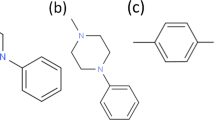Abstract
Madin–Darby canine kidney (MDCK) epithelial cells grown on microporous polycarbonate filters were used as a model system to investigate the mechanisms of enhancement by deoxycholate in the transepithelial transport of horseradish peroxidase (HRP) and 14C-sucrose. Deoxycholate at 0.025% had no effect on the transepithelial electrical resistance (TEER); a fivefold enhancement on the transepithelial transport of HRP, but not on that of 14C-sucrose, was observed. Deoxycholate at 0.05% induced a reversible decrease of TEER; a 2- and 50-fold enhancement on the transepithelial transport of 14C-sucrose and HRP, respectively, was observed. At 0.1%, deoxycholate induced an irreversible decrease in TEER and the epithelial barrier in the cell monolayer was completely eliminated. A 3.3-fold increase in cellular uptake in HRP, but not in 14C-sucrose, was also observed in the presence of 0.025% deoxycholate. The increase in cellular uptake was abolished when HRP was conjugated to polylysine. These results suggest that deoxycholate can increase the transepithelial transport by at least two different mechanisms, i.e., a transcellular pathway, possibly due to the enhancement of cellular uptake of selective molecules, and a nonselective paracellular pathway, due to the loosening of tight junctions by deoxycholate at higher concentrations.
Similar content being viewed by others
REFERENCES
G. S. M. J. E. Duchateau, J. Zuidema, and F. W. H. M. Merkus. Bile salts and intranasal drug absorption. Int. J. Pharm. 31:193–199 (1986).
T. Nagai. Adhesive topical drug delivery system. J. Control. Release 2:121–134 (1985).
E. J. van Hoogdalem, C. D. Heijligers-Feijen, J. Coos Verhoef, A. G. de Boer, and D. D. Breimer. Absorption enhancement of rectally infused insulin by sodium tauro-24, 25-dihydrofusidate (STDHF) in rats. Pharm. Res. 7 (2):180–183 (1990).
A. C. Moses, G. S. Gordon, M. C. Carey, and J. S. Flier. Insulin administered intranasally as an insulin-bile salt aerosol. Effectiveness and reproducibility in normal and diabetes subjects. Diabetes 32:1040–1047 (1983).
V. Bocci, A. Naldini, F. Corradeschi, and E. Lencioni. Colorectal administration of human interferon-α. Int. J. Pharm. 24:109 (1985).
G. M. Scott, R. J. Phillpotts, J. Wallace, D. S. Secher, K. Cantell, and D. A. J. Tyrrell. Purified interferon as protection against rhinovirus infection. Br. Med. J. 284:1822–1825 (1982).
M. J. Cho, J. F. Scieszka, and P. S. Burton. Citric acid as an adjuvant for transepithelial transport. Int. J. Pharm. 52:79–81 (1989).
Y. J. Lin, J. Wan, and W.-C. Shen. Effects of dimethyl sulfoxide (DMSO) and ethanol on the transepithelial electric resistance (TEER) and the pracellular protein transport in cultured Madin-Darby canine kidney (MDCK) cells. Pharm. Res. 6:S-115 (1989).
J. M. Mullin and K. V. Snock. Effect of tumor necrosis factor on epithelial tight junctions and transepithelial permeability. Cancer Res. 50:2172–2176 (1990).
M. J. Cho, D. P. Thompson, C. T. Cramer, T. J. Vidmar, and J. F. Scieszka. The Madin-Darby canine kidney (MDCK) epithelial cell monolayer as model cellular transport barrier. Pharm. Res. 6:71–77 (1989).
W.-C. Shen, J. Wan, and D. Shen. Proteolytic processing in a non-lysosomal compartment is required for transcytosis of protein—Polysine conjugates in cultured Madin-Darby canine kidney cells. Biochem. Biophys. Res. Commun. 166:316–323 (1990).
Worthington Enzyme Manual, Worthington Biochemical Co., Freehold, NJ, 1972, pp. 43–45.
O. H. Lowry, N. J. Rosebrough, A. L. Farr, and R. J. Randall. Protein measurement with the Folin phenol reagent. J. Biol. Chem. 193:265–275 (1951).
G. S. Gordon, A. C. Moses, R. D. Silver, J. S. Flier, and M. C. Carey. Nasal absorption of insulin: enhancement by hydrophobic bile salts. Proc. Natl. Acad. Sci. 82:7419–7423 (1985).
G. P. Martin, C. Marriott, and I. W. Kellaway. Direct effect of bile salts and phospholipids on the physical properties of mucus. Gut 19:103–107 (1978).
S. Hirai, T. Yashiki, and H. Mima. Mechanisms for the enhancement of the nasal absorption of insulin by surfactants. Int. J. Pharm. 9:173–184 (1981).
B. Gumbiner. Structure, biochemistry, and assembly of epithelial tight junctions. Am. J. Physiol. 253:C749–758 (1987).
M. Gibaldi and S. Feldman. Mechanisms of surfactant effects on drug absorption. J. Pharm. Sci. 59:579–598 (1970).
H. J.-P. Ryser, and W.-C. Shen. Drug-polylysine conjugates: Their potential for chemotherapy and for the study of endocytosis. In G. Gregoriadis, J. Senior, and G. Poste (eds.), Targeting of Drugs with Syntheitic Systems, Plenum Press, New York, 1986, pp. 103–121.
M. A. Wheatley, J. Dent, E. B. Wheeldon, and P. L. Smithe. Nasal drug delivery: In vitro characterization of transepithelial electrical properties and fluxes in the presence or absence of enhances. J. Control. Release 8:167–177 (1988).
Author information
Authors and Affiliations
Rights and permissions
About this article
Cite this article
Lin, YJ., Shen, WC. Effects of Deoxycholate on the Transepithelial Transport of Sucrose and Horseradish Peroxidase in Filter-Grown Madin–Darby Canine Kidney (MDCK) Cells. Pharm Res 8, 498–501 (1991). https://doi.org/10.1023/A:1015855329071
Issue Date:
DOI: https://doi.org/10.1023/A:1015855329071




